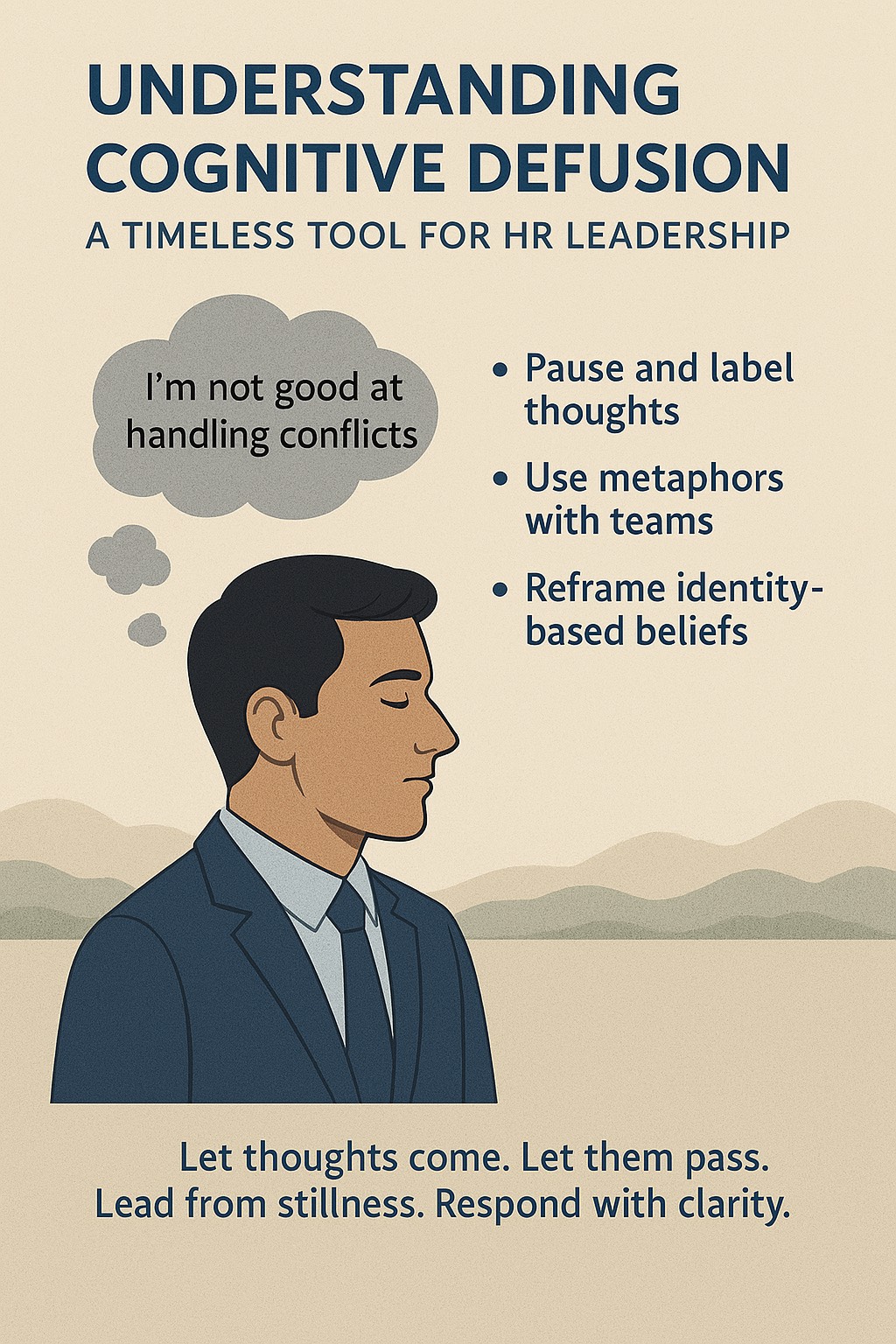Cognitive defusion offers a profound path to clarity in a world where emotional reactions often drive decisions, especially in people-centric roles. Rooted in Acceptance and Commitment Therapy (ACT), cognitive defusion is the art of creating distance from one’s thoughts—allowing leaders to see thoughts as mental events, not absolute truths.
This practice is not about denying inner dialogue but observing it without attachment. A thought such as “I’m not good at handling conflicts” is no longer an identity marker—it becomes merely a passing evaluation. The HR leader shifts from reacting to responding.
Relevance to HR Leadership
HR professionals constantly navigate high-stakes decisions, from handling employee grievances to influencing organisational culture. In such terrains:
Biases and assumptions can cloud judgment. Defusion helps leaders step back, recognise mental patterns, and assess them for what they are—narratives, not facts.
Emotionally charged situations—layoffs, negotiations, or performance interventions—demand presence without personal entanglement. Defusion nurtures this grounded awareness.
Leadership resilience grows as one learns to detach from the internal critic and imposter syndrome. It strengthens the ability to act in alignment with values, not moods.
Reflections from the Bhagavad Gita
The Gita offers timeless echoes of this idea. In Chapter 2, Verse 50, it is said:
“yogaḥ karmasu kauśalam” — “Yoga is skill in action.”
Lord Krishna implies that detachment from the outcome (or thought-based identity) makes action pure, practical, and wise. This is cognitive defusion—acting from awareness rather than mental noise.
In Chapter 6, Verse 6, we find:
“Bandhur ātmātmanas tasya yenātmaivātmanā jitaḥ”
— “For one who has conquered the mind, the mind is the best of friends.”
This reflects the inner mastery that cognitive defusion fosters—a leadership quality beyond competence: the ability to lead oneself.
Relevance to HR Leadership
HR professionals constantly navigate high-stakes decisions, from handling employee grievances to influencing organisational culture.
In such terrains:
Biases and assumptions can cloud judgment. Defusion helps leaders step back, recognise mental patterns, and assess them for what they are—narratives, not facts.
Emotionally charged situations—layoffs, negotiations, or performance interventions—demand presence without personal entanglement. Defusion nurtures this grounded awareness.
Leadership resilience grows as one learns to detach from the internal critic and imposter syndrome. It strengthens the ability to act in alignment with values, not moods.
Practical Use for HR Leaders
Pause and label thoughts: When facing a tough conversation, say internally, “I’m noticing the thought that I might be disliked”. This reduces the thought’s grip.
Use metaphors with teams: Introduce cognitive defusion in coaching, using metaphors like “leaves on a stream” to help others unhook from limiting beliefs.
Reframe identity-based beliefs: Shift from “I am stressed” to “I am having a thought that I am stressed.” This reduces fusion with emotions.
Cognitive defusion is not a soft skill. It is inner leadership. It becomes a sacred discipline when paired with the Gita’s wisdom—leading others while remaining unshaken.
Let thoughts come. Let them pass.
Lead from stillness. Respond with clarity.



